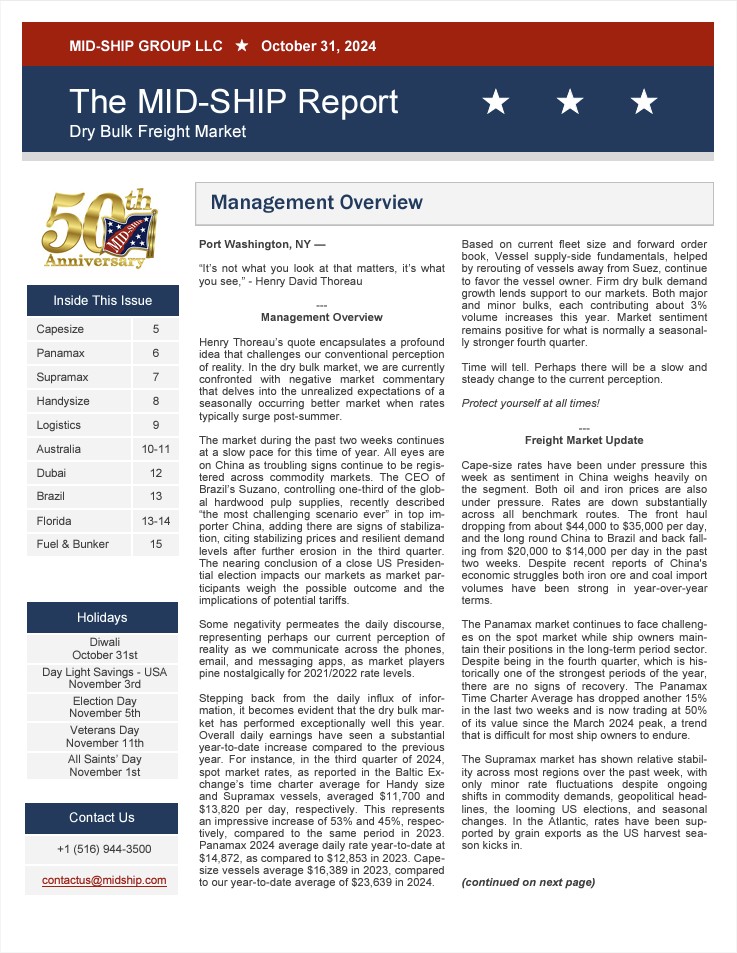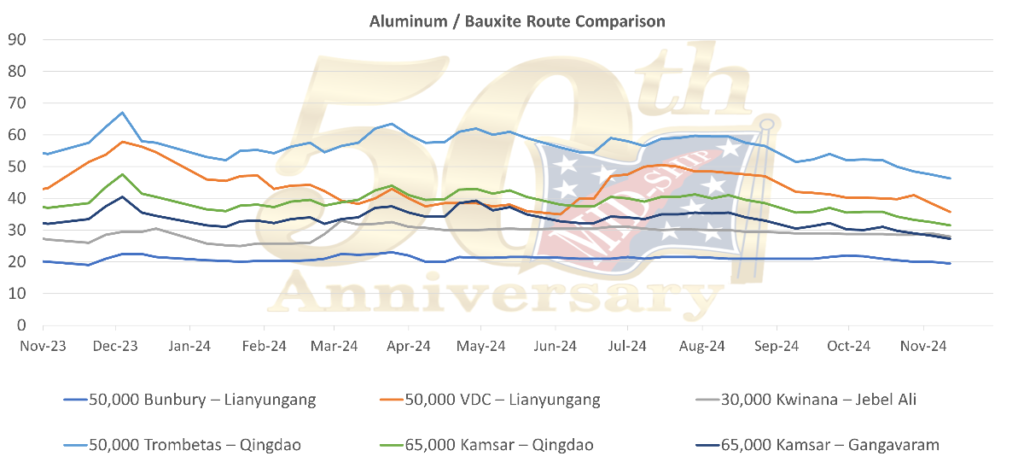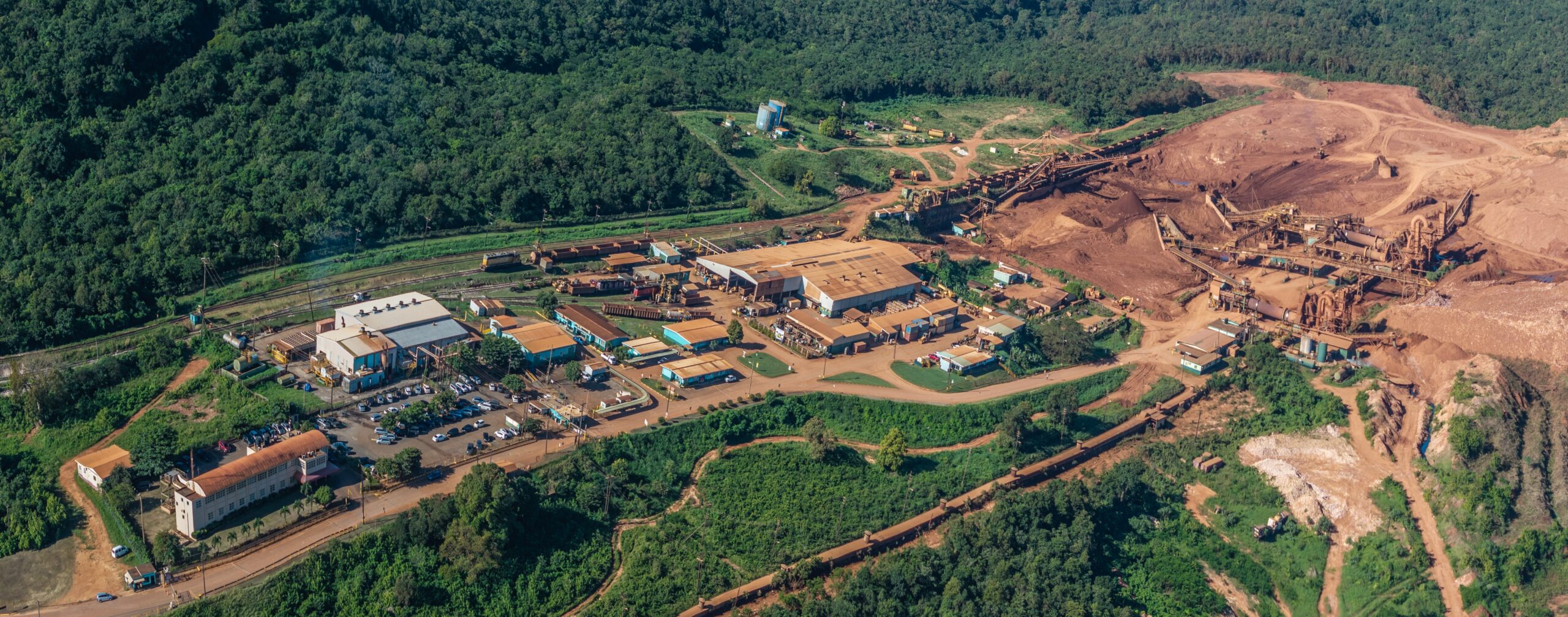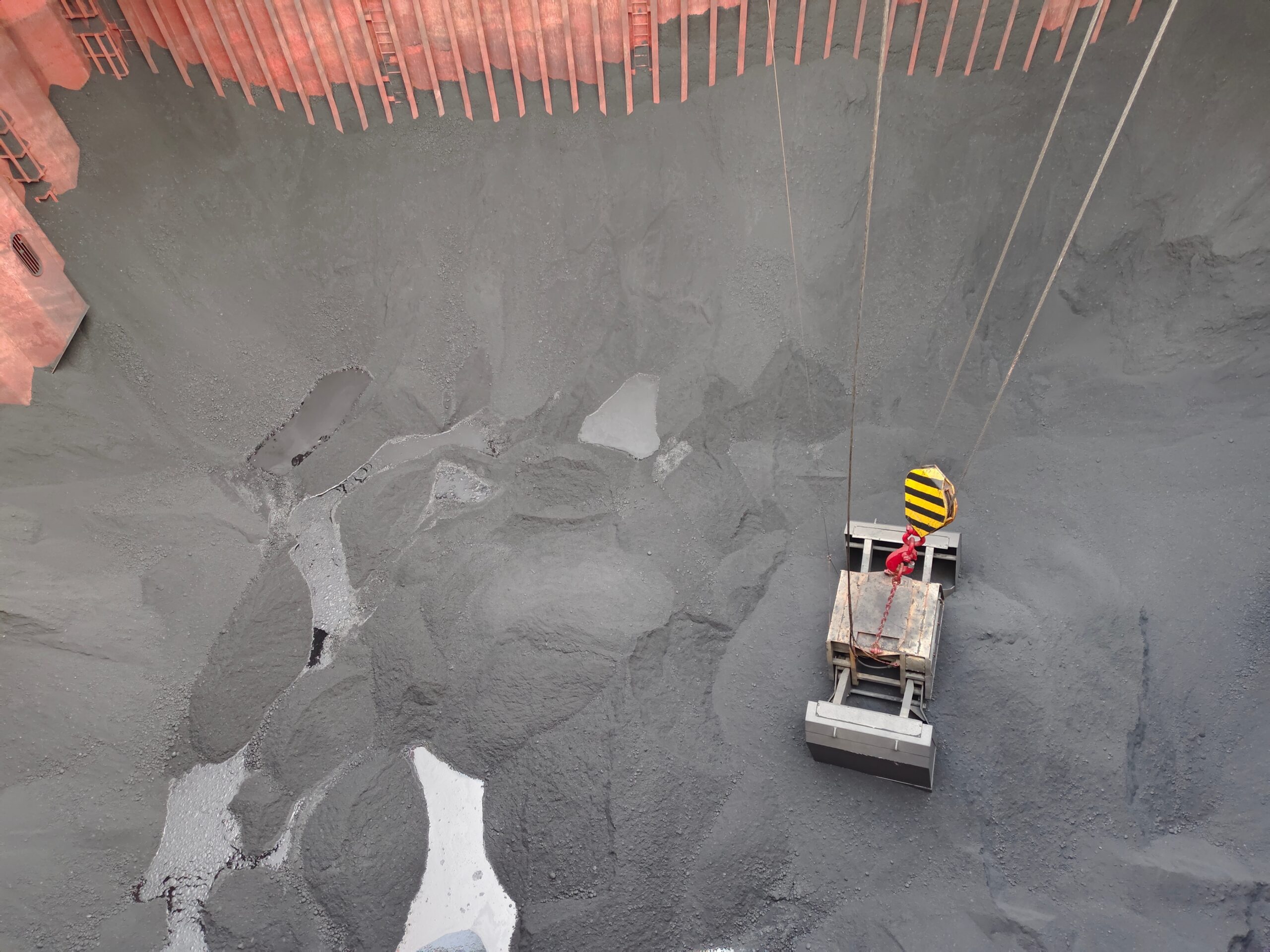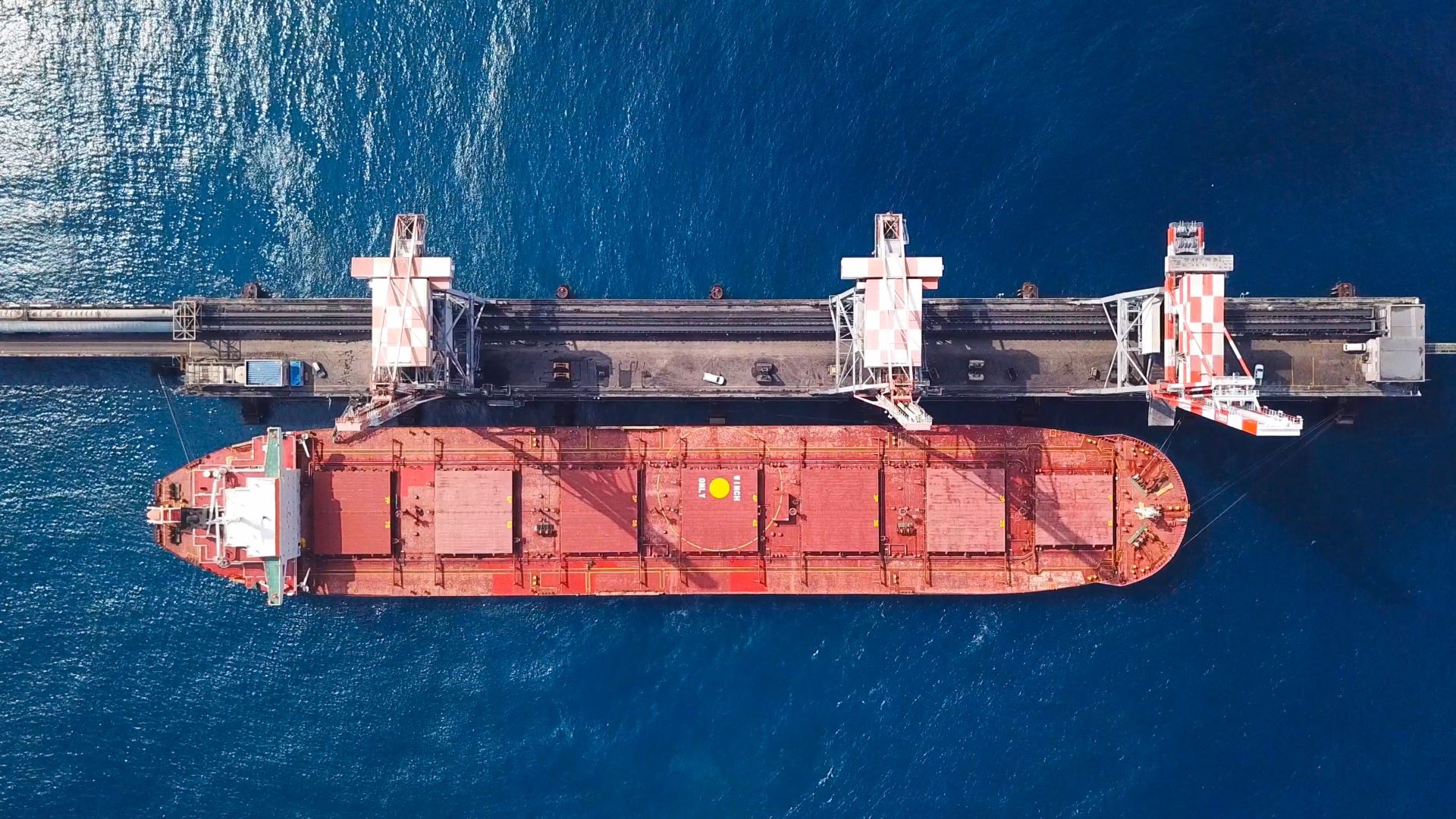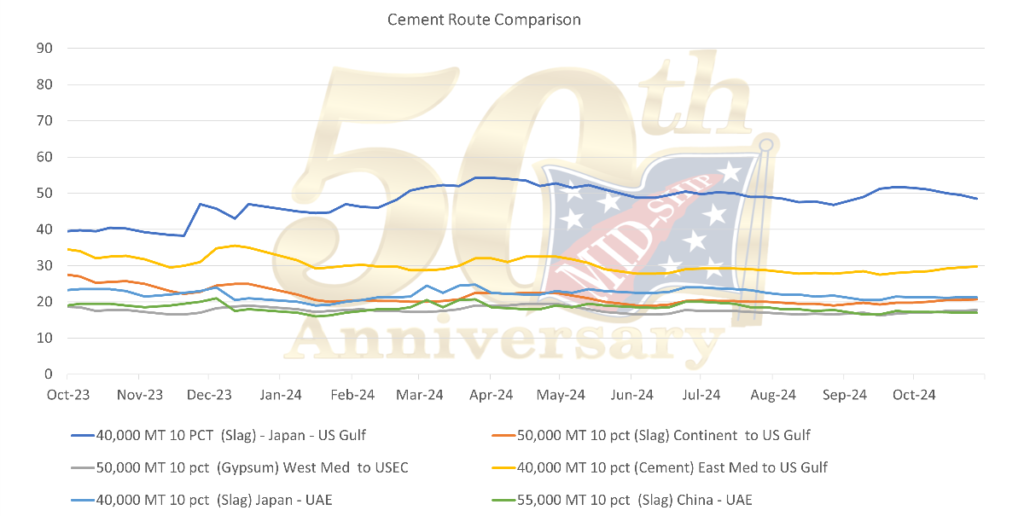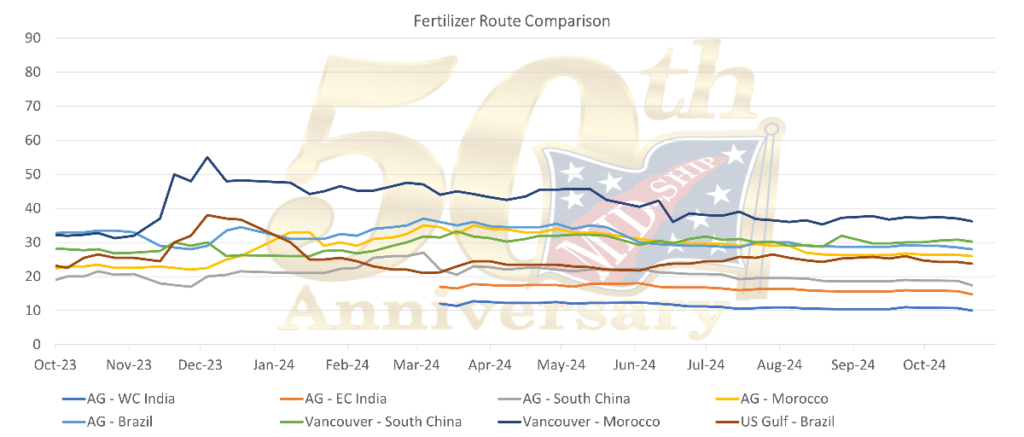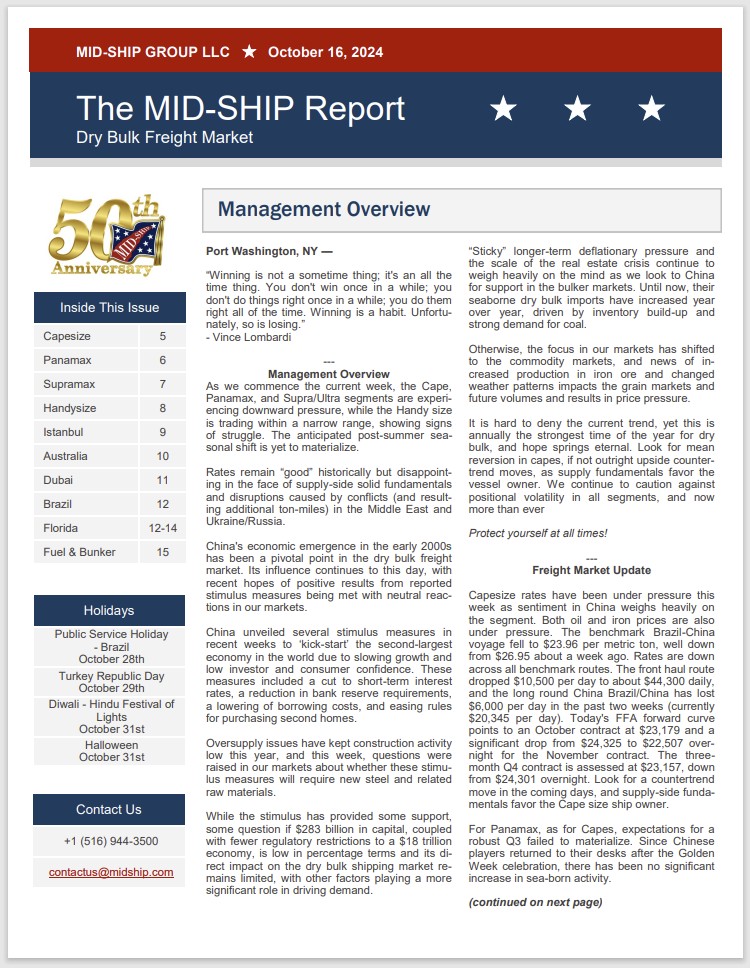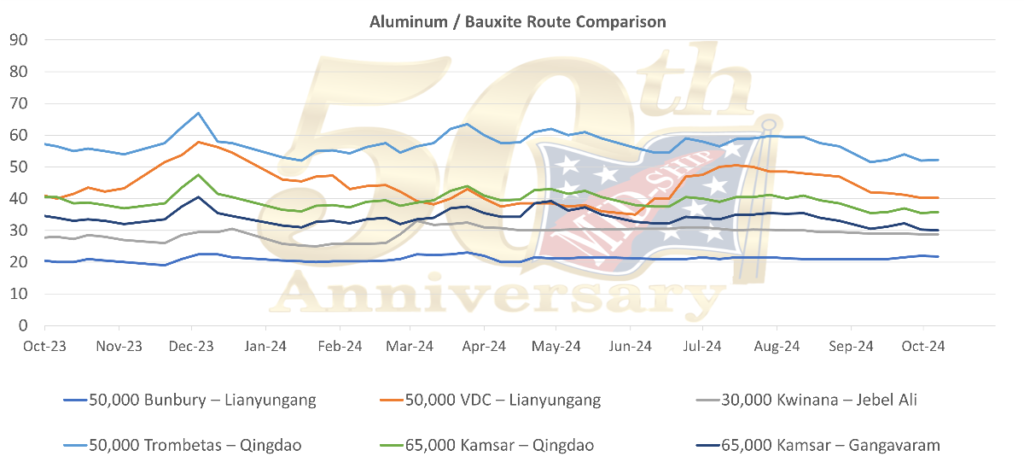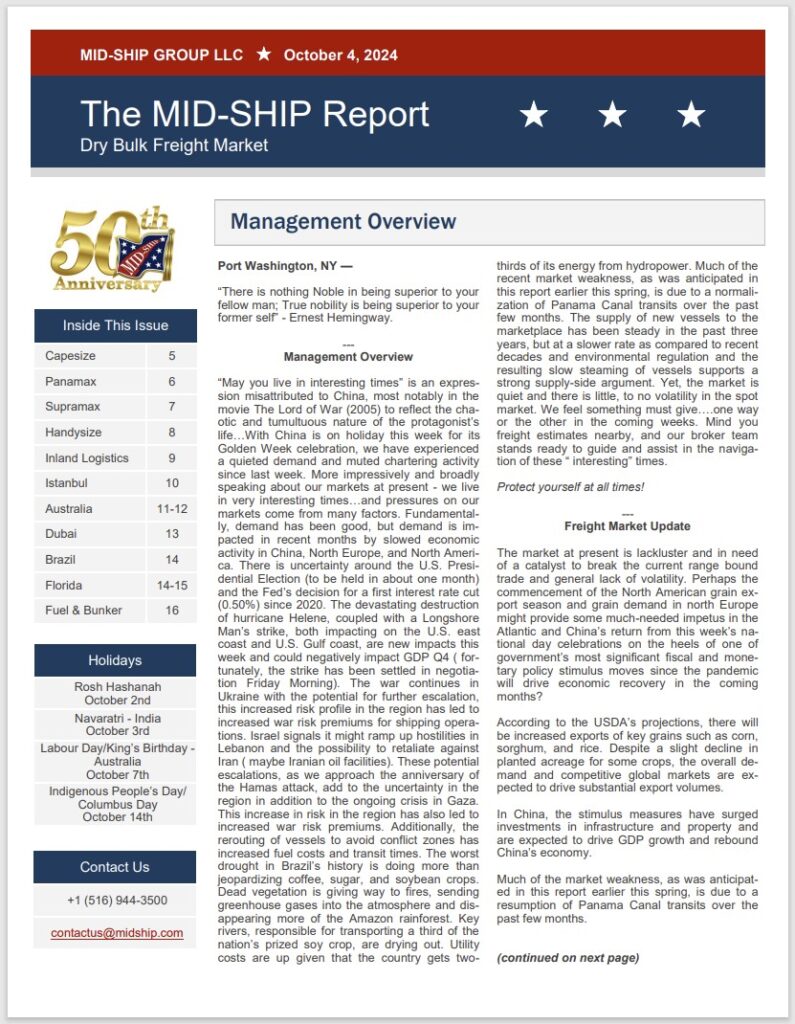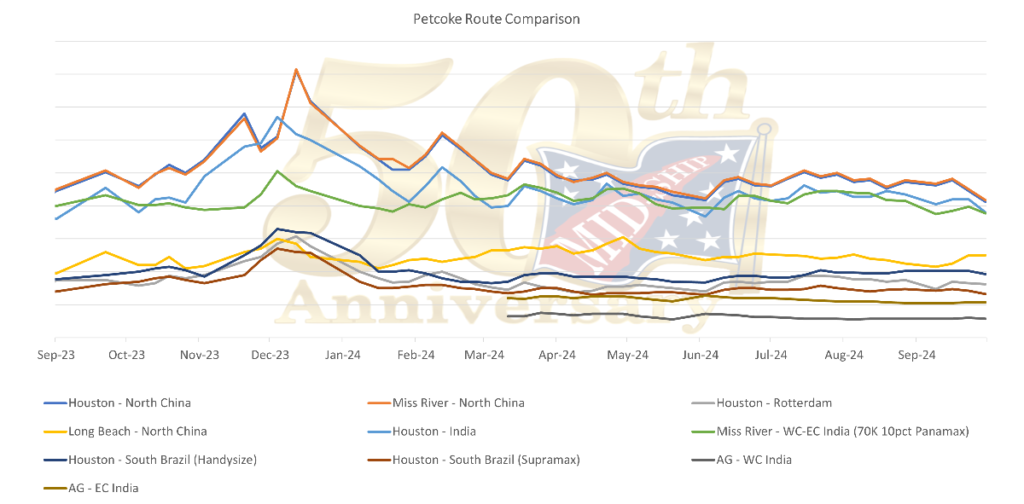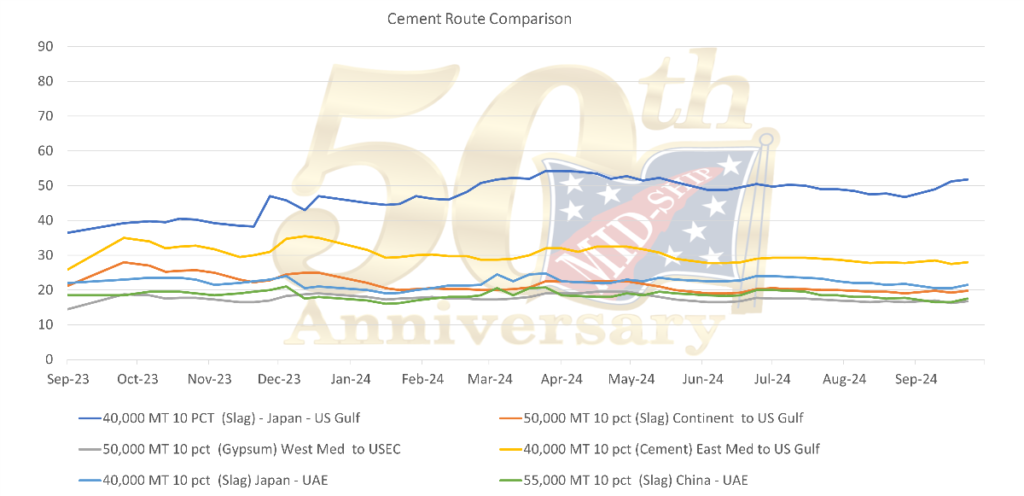October 31, 2024
Cape-size rates have been under pressure this week as sentiment in China weighs heavily on the segment. Both oil and iron prices are also under pressure. Rates are down substantially across all benchmark routes. The front haul dropping from about $44,000 to $35,000 per day, and the long round China to Brazil and back falling from $20,000 to $14,000 per day in the past two weeks. Despite recent reports of China’s economic struggles both iron ore and coal import volumes have been strong in year-over-year terms.
The Panamax market continues to face challenges on the spot market while ship owners maintain their positions in the long-term period sector. Despite being in the fourth quarter, which is historically one of the strongest periods of the year, there are no signs of recovery. The Panamax Time Charter Average has dropped another 15% in the last two weeks and is now trading at 50% of its value since the March 2024 peak, a trend that is difficult for most ship owners to endure.
The Supramax market has shown relative stability across most regions over the past week, with only minor rate fluctuations despite ongoing shifts in commodity demands, geopolitical headlines, the looming US elections, and seasonal changes. In the Atlantic, rates have been supported by grain exports as the US harvest season kicks in.
In Asia, the market performance is mixed. Forward Freight Agreements (FFAs) and short-period rates are positive and expected to rise by year-end.
At the risk of sounding like a broken record, trading in the Handysizes continues to be range-bound. Daily rates moved from $13,073 to $13,098 last week (as compared to a range of $12,941 to $13,078 a week ago), and today, we stand at $12,967. The physical market rate for a trip from the U.S. Gulf to Europe is about $15,471 – up from $14,893 last week. The forward curve shows Q4 paper assessed at $12,556, and Q1 25 at $9,912 (down from $10,433 last week). Q2 2025 is at $11,950 and Q4 2025 at $11,850.
The South Atlantic freight market continues its unseasonal pessimism. We fear the historical drought experienced in Brazil will negatively affect Agri exports in the upcoming season. Inflation is currently said to be at 4.5%, but some Brazilian economists speculate that the percentage of inflation will soar in the coming months.
The news in inland logistics in North America is low water on the Lower Mississippi River has cut river drafts to 9’0″, which considerably reduces barge capacity by 400-500 tons. Southbound grain freight rates have spiked up to 900% of the tariff, up from 725% the prior week. In the same period last year, they were at 575% of the tariff. This constraint comes at a time when the grain harvest is reaching its peak, and crop yield is projected to be one of the largest crops on record for soybeans and the second largest for corn. Even in good operating conditions, this high volume and peak harvest could overwhelm the barge market.
Subscribe below to receive the full report.
